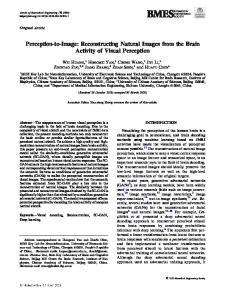from the uterus to the brain: images of hysteria in nineteenth-century Mexico
- PDF / 119,713 Bytes
- 17 Pages / 536 x 697 pts Page_size
- 115 Downloads / 320 Views
abstract Scientific interest in hysteria began in Mexico at the end of the 19th-century, as the medical profession expanded. The Mexican doctors studied madness, drawing on what was confidently regarded as a firm basis of epistemological knowledge. Using modern physiology they entered a discussion that had begun some time before in Europe. Encountering hysteria, an illness presumed to be caused by ‘over-civilization’, they searched for a universal definition. The doctors tried to impose a unifying concept onto the diverse symptoms of hysteria, and, although imitating European ideas, the discourse became distinctive in its attempts to relate hysteria to science and modernity so that all three would make sense. My interest in this article is the feminine; not a reconstruction of the relationship that medicine established between hysteria and the feminine, but a search for a space within the discourse that deconstructs identity and stereotypes. The feminine appears when the coherence of medical discourse is ruptured and when, to explain the illness, the doctors stop attempting to define it. This eventually occurs when the medical discourse considers the subject as unidentifiable and deceptive.
keywords Mexico; hysteria; science; medicine; medical discourse
feminist review 79 2005 c 2005 Feminist Review. 0141-7789/05 $30 www.feminist-review.com (83–99)
83
Allow me to conclude, condensing into a few phrases the ideas presented in this work, which, in its disorder, seems to have taken on the characteristics of the affliction that it sought to describe. (Dr Demetrio Mejı´a, 1896: 467)
introduction Scientific interest in hysteria arrived in Mexico alongside modernity. Hysteria is mentioned in some 18th-century texts and referred to at the end of the 19thcentury, whenever mental health or female illnesses are examined. Even in the earliest accounts, it was portrayed as an illness caused by ‘over-civilization’. According to Bartolache (1772), the main sufferers were the ladies of the upper and middle classes, and Jose ´ Olvera (1895), agreed, identifying the victims of hysteria as those who could not resist the effects of civilization, and who were usually women. From the outset, hysteria was located within a discourse that regarded cultural evolution as a continuum, beginning with the ‘savage’, and culminating with the ‘civilized’. Mexican interest in hysteria began when the medical profession began to focus on mental illness, a field that until then had belonged to what one of the most versatile and prolific doctors of the time, Porfirio Parra, termed ‘metaphysical psychology’. Hysteria came to be studied as part of the doctors’ general enthusiasm for modern physiology, a discipline that provided the epistemological basis for the scientific study of illness. The foundations were in place to initiate in Mexico what had already begun in Europe. Reading the studies in hysteria that had been published in Europe, and citing all those authors who had written on the illness since the 17th century, the Mexican doctors aimed
Data Loading...











